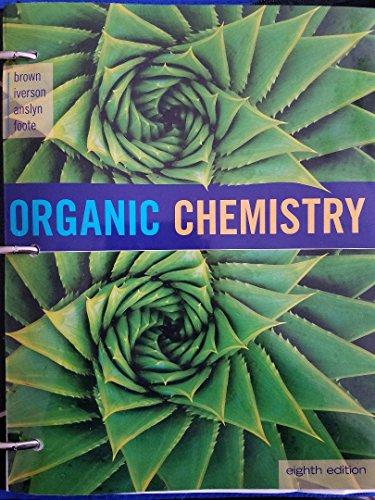
(a)
Interpretation:
4-phenyl-2-butanone has to be synthesized either by acetoacetic ester synthesis or malonic ester synthesis.
(b)
Interpretation:
2-methylhexanoic acid has to be synthesized either by acetoacetic ester synthesis or malonic ester synthesis.
(c)
Interpretation:
3-ethyl-2-pentanone has to be synthesized either by acetoacetic ester synthesis or malonic ester synthesis.
(d)
Interpretation:
2-propyl-1,3-propanediol has to be synthesized either by acetoacetic ester synthesis or malonic ester synthesis.
(e)
Interpretation:
4-oxopentanoic acid has to be synthesized either by acetoacetic ester synthesis or malonic ester synthesis.
(f)
Interpretation:
3-benzyl-5-hexen-2-one has to be synthesized either by acetoacetic ester synthesis or malonic ester synthesis.
(g)
Interpretation:
Cyclopropane
(h)
Interpretation:
Cyclobutylmethyl
Trending nowThis is a popular solution!

Chapter 19 Solutions
Organic Chemistry, Loose-leaf Version
- (b) State the reagents needed to convert benzoic acid into the following compounds. (i) C6H§COCI (ii) C,H$CH2OH (iii) C6H$CONHCH3arrow_forward(a) How will you convert the following :(i) Propanone to Propan-2-ol (ii) Ethanal to 2-hydroxy propanoic acid(iii) Toluene to benzoic acid(b) Give simple chemical test to distinguish between :(i) Pentan-2-one and Pentan-3-one (ii) Ethanal and Propanalarrow_forwardThe following questions concern ethyl (2-oxocyclohexane)carboxylate.(a) Write a chemical equation showing how you could prepare ethyl (2-oxocyclohexane)-carboxylate by a Dieckmann cyclization.(b) Write a chemical equation showing how you could prepare ethyl (2-oxocyclohexane)-carboxylate by acylation of a ketone.(c) Write structural formulas for the two most stable enol forms of ethyl (2-oxocyclohexane)carboxylate.(d) Write the three most stable resonance contributors to the most stable enolate derived from ethyl (2-oxocyclohexane)carboxylate.(e) Show how you could use ethyl (2-oxocyclohexane)carboxylate to prepare 2-methylcyclohexanone.(f) Give the structure of the product formed on treatment of ethyl (2-oxocyclohexane)-carboxylate with acrolein (H2C=CHCH=O) in ethanol in the presence of sodium ethoxidearrow_forward
- 4. Which of the following compounds can be prepared by a malonic ester synthesis? Show the alkyl halide you would use in each case. (a) Ethyl pentanoate © Ethyl 2-methylbutanoate (b) Ethyl 3-methylbutanoate (d) Ethyl 2,2-dimethylpropanoatearrow_forwardDraw the structures of the following.arrow_forwardPredict the product when methyl proanoate reacts with the reagents listed.arrow_forward
- Draw line structures of the following compounds and the product you would obtain from the reduction of each.(a) Isopropyl methyl ketone (b) p-Hydroxybenzaldehyde(c) 2-Methylcyclopentanonearrow_forward1. Predict the products or the reaction of (i) phenylacetaldehyde and (ii) acetophenone with the following reagents: (a) NABH4, then H0+ (c) NH2OH, HCI catalyst (e) 2 CH3OH, HCl catalyst (g) (CH3)3P=CH, (b) Tollens' reagent (cl) CHĄMgBr, then H30+ (t) H2NNH2. KOH (h) HCN, KCNarrow_forwardPredict the products formed when cyclohexanecarbaldehyde reacts with the following reagents.(a) PhMgBr, then H3O+ (b) Tollens reagent (c) semicarbazide and weak acid(d) excess ethanol and acid (e) propane-1,3-diol, H+ (f) zinc amalgam and dilute hydrochloric acidarrow_forward
 Organic ChemistryChemistryISBN:9781305580350Author:William H. Brown, Brent L. Iverson, Eric Anslyn, Christopher S. FootePublisher:Cengage Learning
Organic ChemistryChemistryISBN:9781305580350Author:William H. Brown, Brent L. Iverson, Eric Anslyn, Christopher S. FootePublisher:Cengage Learning
